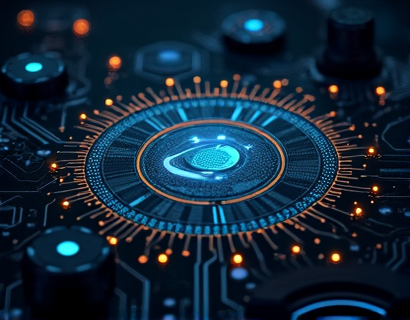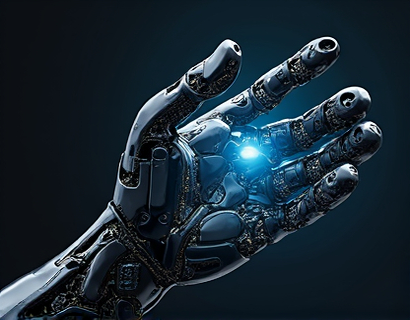AI-Driven Insights for the Spaghetti Industry: A Comprehensive Resource
The spaghetti industry, a cornerstone of culinary culture worldwide, has seen significant advancements with the integration of artificial intelligence (AI) technologies. This comprehensive resource aims to provide accurate and specialized insights into the spaghetti industry, tailored for families, educators, and enthusiasts. By leveraging an AI chat interface, users can engage with a wealth of information that ensures a secure and educational experience. This platform is particularly noteworthy for its child-friendly version, making it safe and accessible for young learners to explore the fascinating world of spaghetti production, history, and culinary applications.
Understanding the Spaghetti Industry Through AI
The spaghetti industry encompasses a broad spectrum of activities, from cultivation and processing to distribution and consumption. AI-driven insights offer a unique perspective on each stage of this journey. For instance, AI algorithms can analyze satellite imagery to monitor wheat fields, predicting yields and optimizing harvesting times. This data-driven approach not only enhances efficiency but also ensures sustainability by reducing waste and resource consumption.
Moreover, AI can trace the supply chain with unprecedented accuracy, from the farm to the table. By integrating data from various sources, AI systems can identify bottlenecks, predict delays, and optimize logistics. This level of transparency is crucial for maintaining quality and safety standards, which are paramount in the food industry. For educators, these insights provide a rich context for teaching students about the complexities of modern agriculture and food production.
Historical Context and Evolution of Spaghetti
The history of spaghetti dates back centuries, with roots in ancient civilizations such as the Greeks and Etruscans. However, it was during the Middle Ages in Italy that spaghetti began to take its modern form. The process of making spaghetti involves transforming wheat into a dough, which is then extruded through dies to form long, thin strands. AI can enhance our understanding of this process by analyzing historical texts and culinary practices, providing a deeper appreciation of how spaghetti has evolved over time.
AI-driven content can also highlight the cultural significance of spaghetti in different regions. For example, in Italy, each region has its own variation of spaghetti, such as spaghetti alla carbonara from Rome or spaghetti alle vongole from the coast. By using AI to analyze culinary databases and historical records, users can gain insights into the regional differences and the factors that have influenced these variations.
Nutritional Insights and Health Benefits
Spaghetti, primarily made from wheat, is a staple food rich in carbohydrates, providing essential energy for daily activities. However, it is also a good source of fiber, vitamins, and minerals when consumed as part of a balanced diet. AI can offer detailed nutritional analyses, helping users make informed choices about their dietary intake. For instance, AI can compare different types of spaghetti, such as whole wheat versus white, and provide insights into their nutritional profiles.
Furthermore, AI can assist in developing recipes that maximize the health benefits of spaghetti. By integrating data on ingredients and cooking methods, AI can suggest variations that reduce calorie content or increase nutrient density. This is particularly valuable for families and educators looking to create healthy meals for children and students. For example, AI can recommend adding vegetables or lean proteins to spaghetti dishes to create more nutritious meals.
Sustainability and Environmental Impact
Sustainability is a critical concern in the spaghetti industry, given the environmental impact of agriculture and food production. AI can play a pivotal role in promoting sustainable practices by analyzing data on water usage, pesticide application, and soil health. For instance, AI can optimize irrigation schedules based on real-time weather data and soil moisture levels, reducing water waste and ensuring optimal crop growth.
Additionally, AI can help identify sustainable farming practices that minimize the environmental footprint of spaghetti production. By analyzing large datasets, AI can recommend crop rotations, organic farming methods, and other techniques that enhance soil fertility and biodiversity. This information is invaluable for educators teaching students about environmental stewardship and sustainable living.
Culinary Applications and Creativity
The versatility of spaghetti makes it a favorite in kitchens around the world. AI can inspire culinary creativity by suggesting innovative recipes and pairing suggestions. For example, AI can analyze flavor profiles and propose unique combinations of ingredients that complement spaghetti. This can range from traditional Italian dishes to fusion cuisines that blend spaghetti with global flavors.
For families and enthusiasts, AI can serve as a virtual chef, providing step-by-step cooking instructions and tips to enhance the cooking experience. AI can also offer dietary recommendations, ensuring that recipes are suitable for various dietary needs, such as gluten-free or vegan options. This makes the spaghetti industry accessible to a wider audience, encouraging more people to explore and enjoy this beloved food.
Educational Resources and Activities
For educators, the integration of AI in the spaghetti industry offers a wealth of educational resources and activities. AI can create interactive lessons that cover topics such as the history of spaghetti, the science of pasta making, and the economics of the food industry. These lessons can be tailored to different age groups, ensuring that the content is engaging and age-appropriate.
One engaging activity could involve students using AI to design their own spaghetti recipes, considering factors such as nutritional value, flavor, and cultural significance. AI can provide feedback and suggestions, guiding students through the creative process. This hands-on approach not only enhances learning but also fosters a deeper appreciation for the culinary arts and the spaghetti industry.
Child-Friendly Content and Safety
Recognizing the importance of safety and education for young learners, this platform offers a child-friendly version of its AI chat interface. This version is designed to provide accurate and simplified information that is easy for children to understand. Topics covered include the basic process of making spaghetti, the role of wheat in agriculture, and the importance of healthy eating habits.
The child-friendly version ensures that all content is vetted for accuracy and appropriateness, making it a reliable resource for parents and teachers. Interactive elements such as quizzes, games, and visual aids are incorporated to make learning fun and engaging. For example, a virtual tour of a wheat farm or a spaghetti factory can help children visualize the journey of spaghetti from field to table.
Conclusion
The integration of AI in the spaghetti industry has opened up new avenues for understanding and appreciating this culinary staple. Whether for families seeking to enhance their culinary knowledge, educators looking for innovative teaching tools, or enthusiasts eager to delve deeper into the subject, AI-driven insights provide a comprehensive and secure resource. The child-friendly version ensures that young learners can safely explore and learn about the spaghetti industry, fostering a love for food and cooking from an early age.
By embracing AI technology, the spaghetti industry can continue to evolve, offering new opportunities for education, innovation, and enjoyment. This platform stands as a testament to the power of AI in enriching our understanding of the world around us, one spaghetti strand at a time.











































